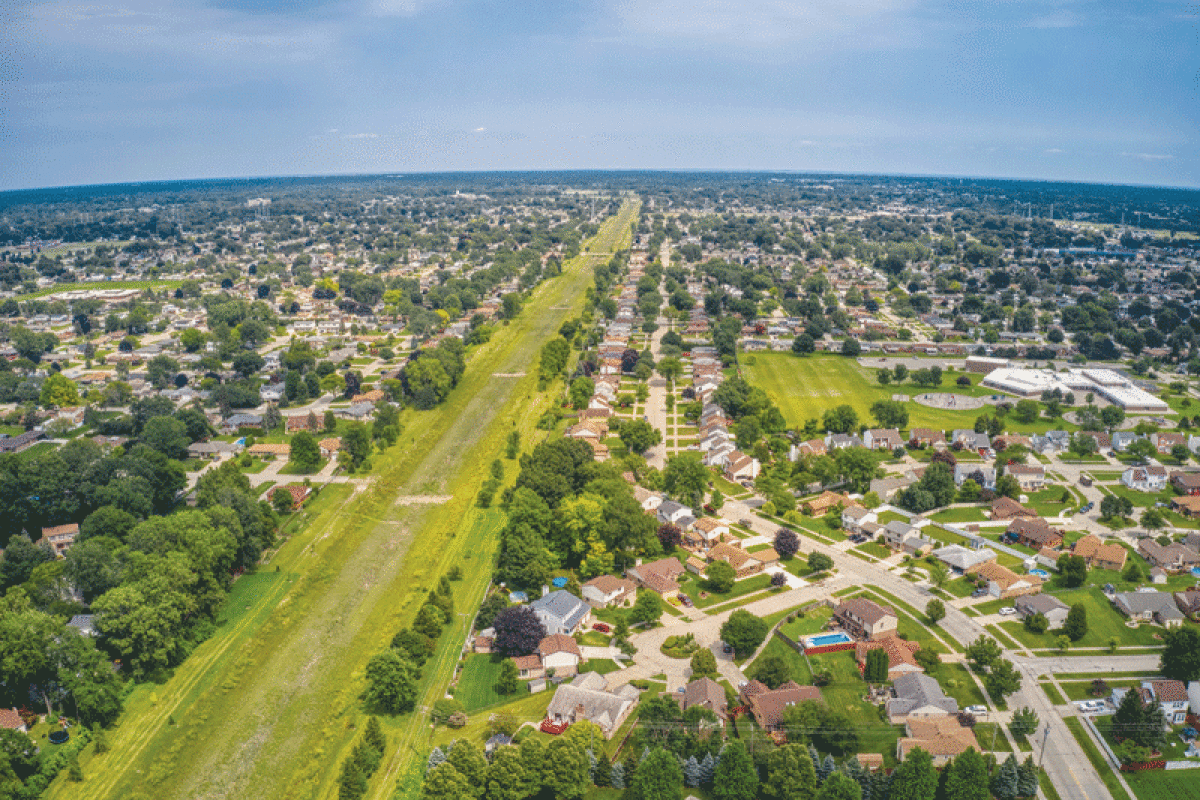STERLING HEIGHTS — Sterling Heights is working on ideas to increase its living lumber.
A couple of months ago, Sterling Heights officials celebrated being named an Arbor Day Foundation Tree City USA for a 38th year. But city officials say there’s much work left to be done to build up the city’s tree canopy.
In November 2022, the city announced that it commissioned a tree inventory study with Davey Resource Group that inspected trees in public parks and rights of way.
Sterling Heights Community Relations Director Melanie Davis gave a preview of some of the tree study’s findings. She said in an email that, based on information she got from the City Development Department, the study concludes that the city’s tree canopy is “relatively young and homogenous.”
“Continuing with tree planting of diverse species along with high quality maintenance of the city’s young and established trees will help in achieving the ideal diversity of age class and species distribution,” Davis said.
Davis said the canopy is healthy overall, as 94% of its almost 35,000 trees were in good or fair condition.
“Only 1,290 were recommended to be removed, and 171 stumps were identified for removal,” she added.
For years, some Sterling Heights officials have talked about increasing the tree canopy, and environmental concerns ultimately led to the formation of the city’s Sustainability Commission, which formed a Sustainability Plan in 2021.
That Sustainability Plan said the city’s tree canopy is too sparse and cited development and the emerald ash borer as contributing factors. It said the city’s tree canopy was measured at around 19% of city land in 2016, and the city has since made 30% its goal.
The plan mentions tree benefits including helping wildlife, enhancing natural beauty, increasing property values and reducing the need for residential heating and air conditioning.
The plan suggests that the city consider buying vacant land “for preservation and/or recreation.”
In addition, the Sustainability Plan has several tree-related goals, including teaching the public about them their benefits, “reforesting residential areas,” and preserving existing trees.
According to the Sterling Heights Sustainability Commission’s Nathan Inks, Sterling Heights has succeeded at accomplishing some of these goals. He said the city updated its tree preservation ordinance in 2022 to better protect valuable “landmark trees” that provide environmental benefits.
And Inks added that the city also finished its tree inventory.
“That inventory is a helpful step toward creating a natural features map and will enable the City to analyze areas where tree planting should be prioritized,” he said in a city email.
Inks said the city still has to complete its goals of public education and reforesting residential spaces.
One reforestation method the city has looked at is microforests. At a January 2022 meeting, city officials discussed options for spending anticipated American Rescue Plan Act funds, and the topic of microforests came up.
Sterling Heights Assistant City Manager Jeff Bahorski raised the possibility of creating a community garden and microforest for around $1.25 million that he said would tie in with the city’s sustainability goals.
Bahorski described a microforest as a mass of trees and thick vegetation that can be planted within 1,000 square feet. He said it becomes an “oasis for biodiversity” that takes around three years to be self-sustaining and 10 years to fully grow.
“If funded through ARPA, this initiative will start with site selection for the city’s first microforest,” he said. “We hope to make this a community effort by seeking groups and individuals interested in volunteering their time and talent to the project. Once the city is able to prove the concept through this first microforest, there is great opportunity to address other sites and start the greening of Sterling Heights.”
In a city email, Bahorski said the city is still looking at its options on public property to eventually pick a spot or two to put in a microforest.
“The initial sites will be smaller, approximately 1,000 to 2,000 square feet, which is a size that allows the city to work out the soil composition and tree mix, which are essential factors to a successful microforest,” he said. “The initial plantings are targeted in the spring or fall of 2024, with larger-scale plantings in 2025.”
Inks said he’d like to see at least one microforest — or possibly a few — as part of the upcoming redevelopment of the Lakeside Mall area.
“Because much of the property is proposed to be completely redeveloped, microforest placement could be easily incorporated into the planning of the development,” he said. “But I think a microforest could be appropriate in any area of the city planned for mixed-use development, as a microforest would provide a nice pedestrian amenity.”
Learn more about Sterling Heights by visiting www.sterling-heights.net or by calling (586) 446-2489.
 Publication select ▼
Publication select ▼





















